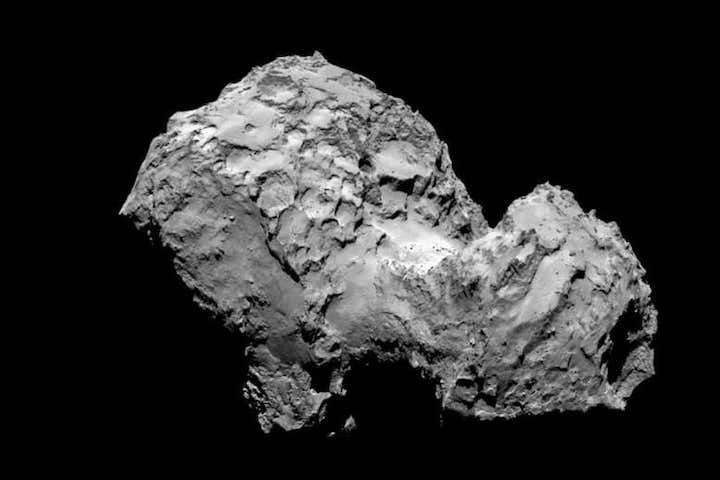13.03.2020

ESA/Rosetta/MPS for OSIRIS Team MPS/UPD/LAM/IAA/SSO/INTA/UPM/DASP/IDA
The mystery of the missing nitrogen in comets may finally be solved. These space rocks appear to have 10 times less nitrogen than they ought to based on our understanding of how they form, but a new finding from comet 67P/Churyumov-Gerasimenko might reveal how comets have been hiding their nitrogen.
The European Space Agency’s Rosetta spacecraft orbited 67P between 2014 and 2016, taking pictures of the comet and measuring its environment. Analysis of the light bouncing off the comet revealed that some compound was absorbing light from its surface, but researchers couldn’t immediately identify what it was.
Olivier Poch at the University of Grenoble in France and his colleagues compared the properties of that light with light bounced off artificial asteroid dust in the lab. This contained dust grains similar to those known to exist on 67P, as well as various other compounds. They found an astonishingly good match with ammonium salts, which contain nitrogen and hydrogen.
They also discovered similarities between the ammonium measurements and observations from asteroids, which means these rocks could have some of the chemical on their surfaces as well. This could help explain where the missing nitrogen is.
It could also help explain how the solar system’s giant planets formed: by measuring how much nitrogen they have and comparing it with the amount in comets, we could figure out whether young planetary cores were made of comets, says Kathleen Mandt at Johns Hopkins University in Maryland.
“It could be valuable information for understanding how the ice giants formed and how many comets might be in there,” she says. This is important because we don’t know what proportion of the early planets were made of solids like comets and asteroids as opposed to gas.
Finding ammonium salts in particular is interesting as they are important to the chemical reactions that form the amino acids that living organisms are made from, as well as the nucleobases that make up DNA, says Poch.
“There is a tantalising scenario in which you can imagine that if comets such as 67P fall on the early Earth and the ammonium salts dissolve in water, you may have all these prebiotic reactions happen,” he says. If that did occur, comets could have been important not only to the formation of planets, but also the evolution of life.
Quelle: NewScientist
